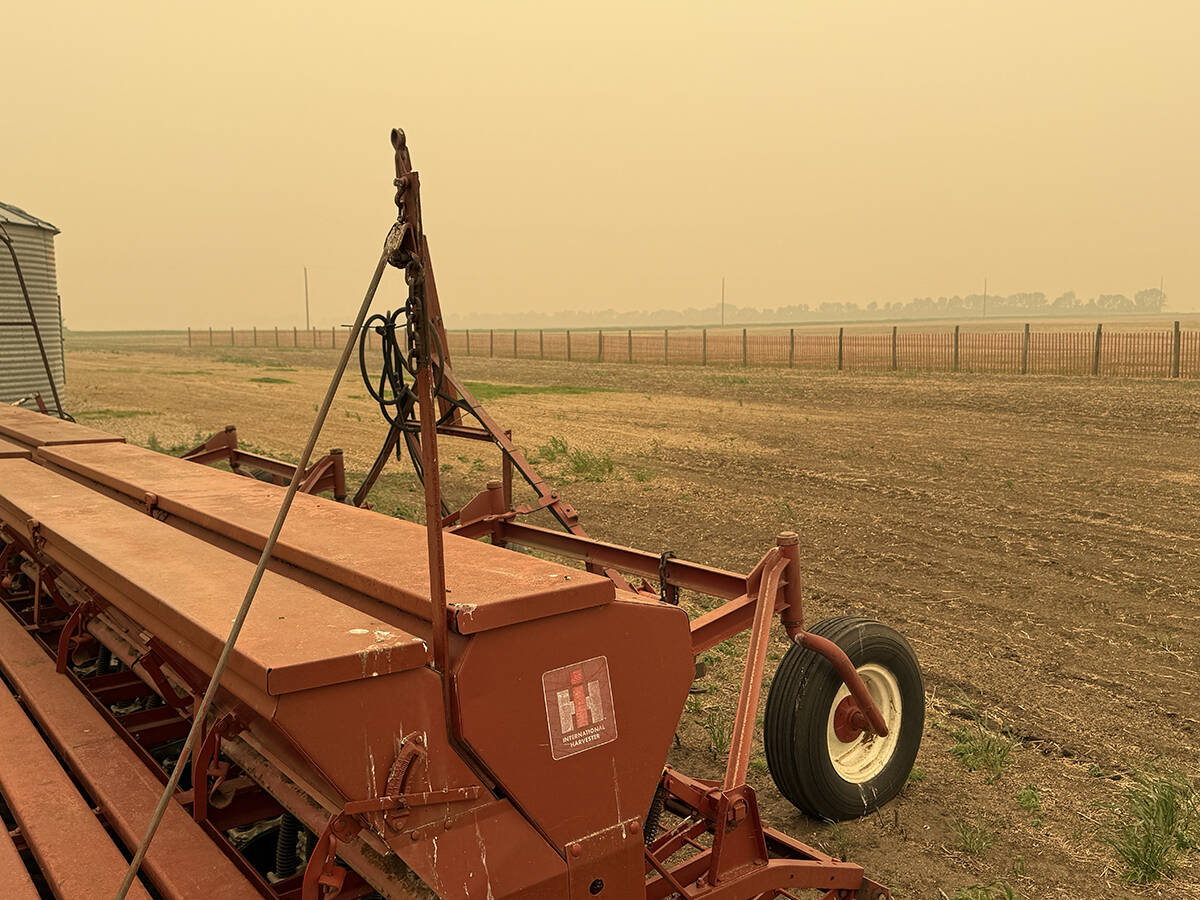Versatile says working with Cummins on a 15-litre engine is a good opportunity for the company to prepare for the future
The first place farmers will see the 15-litre hydrogen engine being developed by Cummins will likely be in a Versatile tractor.
“We’ve had a partnership with Cummins since the second year we were building tractors,” said Erron Leafloor of Versatile.
“They’ve relied upon us a couple times in the past, most recently with the Tier 4 Final engines, to be their partner and to prove out engine technology in the off-road and agricultural industry.”
Leafloor leads an engineering team at Versatile that’s working on the proof of concept for a hydrogen-powered tractor.
Read Also

Wildfires have unexpected upside this year
One farmer feels smoke from nearby wildfires shrouded the July skies and protected his crop from the sun’s burning rays, resulting in more seeds per pod and more pods per plant.
He said working with Cummins on the 15-litre hydrogen engine is a good opportunity to help Versatile prepare for the future.
“I think everybody realizes that diesel engines are going to be a difficult thing to either come by or justify using as we see a more carbon neutral or decarbonized future,” Leafloor said.
He said Cummins is focusing on 6.7 and 15-litre hydrogen engines and that the 6.7-litre engine is already being prototyped while the 15-litre engine will go to prototype soon.
“Their goal is to have a common engine from the head gasket down across all three of the fuels that they’re planning on making the engine capable of running on, that being diesel, methane and hydrogen,” Leafloor said.
“The concept there is to keep as many parts as possible common. Keep the mounting, the bell housing, and all that of those kinds of components including the water pump common across all three platforms. They will just change the fuel delivery and exhaust system and probably the turbo charging system that’s associated with each of those three fuels.”
He said the first Cummins hydrogen engine likely won’t match the horsepower of the 620 Versatile tractors and that there are challenges that come with hydrogen power.
“It has a higher jacket temperature so it requires more cooling, for example, and it still requires the capability of having after treatment, though it might be slightly different than what’s used on a diesel engine,” Leafloor said.
“Hydrogen can cause some metals to become brittle if the hydrogen is allowed to enter the grain of the metallic structure. It can cause surface brittleness. So, there’s a lot of research on the engine side just to make sure the components don’t become brittle over time.”
Engineers will also have to design high-compression tanks because hydrogen requires a much larger volume to achieve an equivalent amount of power compared to hydrocarbons like diesel.
When it comes to storing and handling hydrogen safely, Leafloor said he sees parallels with how anhydrous is handled.
“Whether that’s the distribution of anhydrous or the storage of it at retail and on farm, or the understanding of the safety concerns with that type of fertilizer. Not everybody has experience with it and not everybody’s comfortable with it,” Leafloor said.
“There’s always going to be pockets where this will not be the right technology and there will be progressive pockets that will use this to get a market advantage perhaps.”
Leafloor said hydrogen engines provide a similar torque curve as diesels engines, even though hydrogen engines use a spark plug like a gasoline engine.
“Which is counterintuitive when you think about a gasoline engine versus a diesel engine, spark versus compressive or compression ignition. We would expect that a spark ignition engine won’t have nearly the torque curve or the torque capabilities, but hydrogen appears to have that capability,” Leafloor said.
Hydrogen combustion engines can provide a zero-carbon fueled solution for high load factor without sacrificing productivity and it’s likely sustainability programs will consider this.
“Farms that have ties to the major brands, PepsiCo, Walmart, Cargill, that are actively creating partnerships with farms and farmers so that they can advertise that they’re food is grown in a sustainable method, and they’re willing to pay extra for the certification or the traceability of that sustainable crop,” Leafloor said.
He said the first prototype is years away, and that the infrastructure required to support hydrogen tractors also needs to be built.
“The bigger challenge is the logistics and the management of a brand-new fuel type in our tractor. We’ve been used to just pumping diesel fuel out of a tank. Now we must deal with a gaseous fuel that is stored at a very high pressure.”
He said some prairie regions may have advantages over others when it comes to using hydrogen-powered tractors.
For instance, Alberta has developed hydrogen production capacity from hydrocarbons, while Manitoba has potential to produce green-hydrogen from hydroelectricity, which has an even smaller carbon footprint.
















